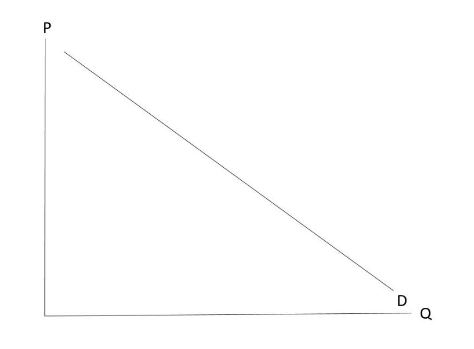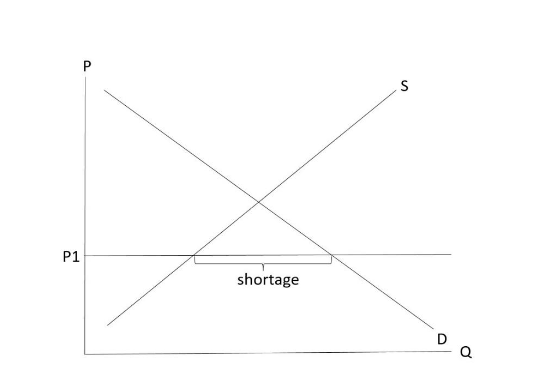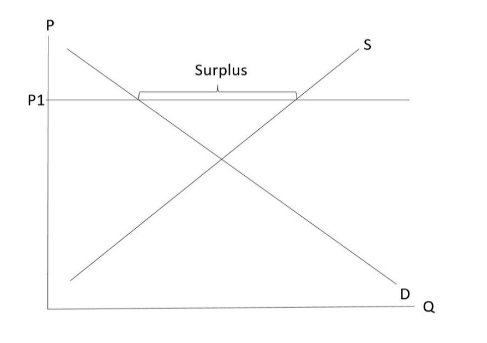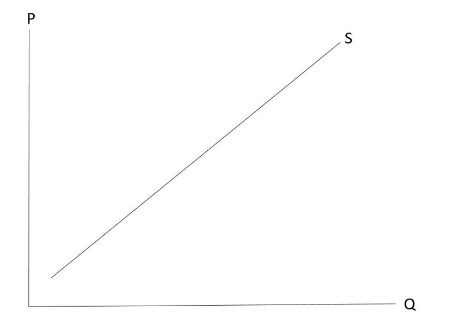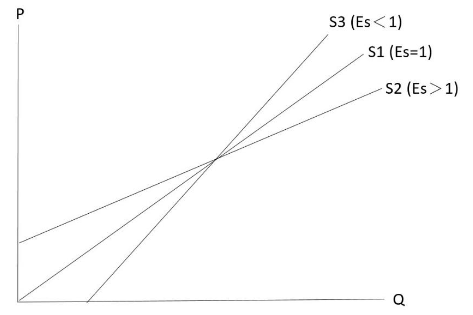Demand and Supply dse
需求與供應是現代經濟學中最基本且重要的概念之一。需求代表了消費者對商品或服務的需要,而供應則代表了生產商或供應商提供商品或服務的能力。需求與供應的關係直接影響著市場價格和交易量,對於企業經營和國家經濟發展都有著重要的影響。
在現代經濟體系中,需求和供應的變化受到許多因素的影響,包括政府政策、社會和文化變遷、科技進步等等。對於企業和政府而言,了解和掌握需求和供應的變化趨勢,是制定有效策略和做出明智決策的基礎。
本文將探討需求與供應的基本概念和相互關係,分析對需求和供應的影響因素,以及如何透過市場調研和分析來了解需求和供應的變化趨勢。我們希望通過這篇文章,讓讀者對需求與供應有更深入的理解,並對經濟學和商業實踐有所啟發。
The law of demand
When the price of a good increases, its quantity demanded will decrease, and vice versa, other factors being constant.
Moving along the same demand curve→ changes in price.
Shifting of the whole demand curve → changes in other factors other than price.
Other factors may include:
-Weather
-Income
-Government policies
-Taste and preference of consumers
-Buyers’ expectation of future price
–If buyers expect the price of a good would rise in the future, their current demand for the good will increase, and vice versa. (將來買會蝕,所以而家買多D)
-Number of consumers
-Demand-side relationship of goods
Shortage (excess demand)
A situation where the quantity demanded is greater than the quantity supplied at a particular price which is set below the equilibrium level.
Surplus (excess supply)
A situation where the quantity supplied is greater than the quantity demanded at a particular price which is set above the equilibrium price.
Relationships between two goods (Demand-side)
Substitutes (competitive demand)
-two goods that satisfy the same want of consumers.
-When the price of one good increases (can be caused by an increase in demand or a decrease in supply), the demand for another good will increase, and vice versa. (買一個唔買另一個)
-Example: physical books vs E-books
-如果physical books貴左(P↑),D人會買小左physical books,轉去買E-books,E-books嘅demand↑。
Complements (joint demand)
-two goods are used together to satisfy one want.
-When the price of one good increases (can be caused by an increase in demand or a decrease in supply), the demand for its complement will drop, and vice versa. (齊上齊落,一齊用)
-Example: CDs and CDs player
-如果CDs貴左(P↑),D人會買小左CDs,自然對CDs player嘅demand都會↓。
Derived demand
-A good is defined as the derived demand of another good when it is used to make/produce that good i.e. the factors of production of another good.
-When the demand for a good increases, the demand for its derived demand (factors of production) will increase, and vice versa.
-Example: Coffee and coffee beans, where coffee = goods produced/output, coffee beans = derived demand/factors of production
-如果coffee嘅demand↑,對coffee beans嘅demand自然都會↑,因為coffee要用coffee beans整。
Derived demand vs competitive supply
前者係整一樣嘢會需要另一樣嘢which is要整嘅果樣嘢嘅factors of production,而後者就係兩樣嘢需要相同/相似嘅factors of production。
Superior (normal) goods and inferior goods
-When people’s income increases,
the demand for superior/normal goods will increase while the demand for inferior goods will decrease.
-To sum up, the demand for superior/normal goods is positively related to people’s income while the demand for inferior goods is negatively related to people’s income.
Summary
| When X and Y are… | X’s P↑(caused by D↑/S↓) | X’s P↓(caused by D↓/S↑) |
| Substitutes | D for Y↑→P of Y↑→Qs of Y↑ | D for Y↓→P of Y↓→Qs of Y↓ |
| Complements | D for Y↓→P of Y↓→Qs of Y↓ | D for Y↑→P of Y↑→Qs of Y↑ |
The law of supply
When the price of a good increases, its quantity supplied will increase, and vice versa, other factors being constant.
Moving along the supply curve → changes in price.
Shifting of the whole supply curve → changes in other factors other than price.
Other factors may include:
-Cost of production (technology level/input prices/tax/subsidy)
-Sellers’ expectation of future price
–If sellers expect the price of a good would rise in the future, the current supply of the good will drop, and vice versa. (將來賣會賺D,所以而家整少D)
-Number of sellers
-Weather
-Supply-side relationship of goods
Relationship between two goods (supply-side)
Joint supply
-When the production of one good generates another good, these two goods are in joint supply. (整一樣嘢嘅同時會整埋第二樣嘢,例如殺隻牛去攞牛肉,會同時有埋牛皮)
-When the price of a good increases (can be caused by an increase in demand or a decrease in supply), the supply of the joint supply of it will increase, and vice versa.
-Example: cow and leather
Competitive supply
-When two goods require the same/similar factors of production, these two goods are in competitive supply. (整一個唔整另一個)
-When the price of a good increases (can be caused by an increase in demand or a decrease in supply), the competitive supply of it will drop, and vice versa.
-Example: adult’s wear vs children’s wear
-如果店家發現整adult’s wear會賺多D錢,佢地就會整多D,變相整少左children’s wear,因為兩者都需要相同/相似嘅factors of production
Elasticity of demand
Measure the responsiveness of the quantity demanded of a good to a change in its price.
買家對於價格改變嘅反應程度,越大越elastic, and vice versa.
Equation
% change in Qd /%change in P
OR
((new Qd – old Qd) / 中間 ) / ((new P – old P) / 中間))
Types of demand in different elasticity
Elsatic demand
Percentage change in quantity (demanded) is greater than the percentage change in price.
Inelastic demand (0<Ed<1)
Percentage change in quantity (demanded) is smaller than the percentage change in price.
Unitarily elastic demand (Ed = 1)
Percentage change in quantity (demanded) equals the percentage change in price.
Perfectly elastic demand (Ed = ∞)
Any changes in price can cause an infinity change in quantity demanded
Perfectly inelastic demand (Ed = 0)
Any changes in price will not cause any changes in the quantity demanded I.e. Qd remains the same at any price.
Relationship between elasticity of demand and total expenditure/revenue
| Types | P increases | P decreases | Relationship |
| Elastic demand | Decreases | Increases | Negative/反方向 |
| Inelastic demand | Increases | Decreases | Positive/同方向 |
| Unitarily elastic demand | Same | Same | / |
Point to note
If only a change of price is stated in the question, the effect on total expenditure/revenue should be uncertain as we don’t know whether the demand is elastic or inelastic.
Factors affecting the elasticity of demand
-Close substitutes (more close substitutes→tend to be elastic)
-Necessity (Eg. 食煙) (higher degree of necessity→tend to be inelastic)
-Habit forming (consumption habit formed→tend to be inelastic)
-Proportion of expenditure to income (higher proportion→tend to be elastic)
-Number of uses (more uses→tend to be elastic)
-Time available to adjust consumption (more time →tend to be elastic)
-Durability (more durable →tend to be elastic)
-Common sense
Elasticity of supply
Measure the responsiveness of the quantity supplied of a good to a change in price.
價格改變之後,增加/減少一樣嘢嘅supply嘅速度, 越快越elastic, and vice versa.
Equation
% change in Qs /%change in P
OR
((new Qs – old Qs) / 中間 ) / ((new P – old P) / 中間))
Types of supply in different elasticity
-Elastic supply (Es>1)
-Inelastic supply (0<Es<1)
-Unitarily elastic supply (Es = 1) (由origin出發,45度嘅直線)
-Perfectly elastic supply (Es = ∞)
-Perfectly inelastic supply (Es = 0)
Factors affecting the elasticity of supply
-Available amount of goods (supply of some goods are perfectly inelastic in nature eg. Hospital, housing, tunnels, infrastructure)
-Ease of adjusting factors of production (easier→tend to be elastic)
-Factor mobility (more mobile →tend to be elastic)
-Reserve capacity (more reserve →tend to be elastic)
-Adjustment time (more time allowed →tend to be elastic)
-Ease of entry (easier →tend to be elastic)
-Common sense
Reminder on drawing demand-supply diagram
| Situation | 我地睇… |
| 淨係Demand郁 | Es/Qs(Qt) |
| 淨係Supply郁 | Ed/Qd(Qt) |
| Demand supply一齊郁 | Qt |
如果大家有什麼補習問題,如私人補習、網上補習好唔好,歡迎你可以隨時再跟我多交流一下,可以Follow 「學博教育中心 Learn Smart Education」 Facebook page同IG得到更多補習課程資訊,亦都可以上我們的補習網頁了解更多!
DSE Econ 文章系列
Microeconomics
Macroeconomics
- 經濟表現的量度 Measure of economic performance
- 國民收入決定及價格水平 National income determination and price level
- 貨幣與銀行 Money and Banking
- 宏觀經濟問題和政策 Macroeconomic Problems and policies
- 國際貿易和金融 International Trade and Finance




